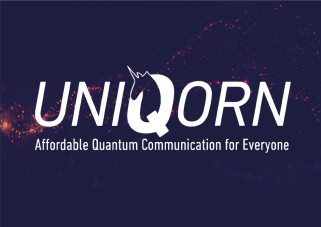Sensing and Metrology
macQsimal - Miniature Atomic vapor-Cells Quantum devices for Sensing and Metrology Applications
MACQSIMAL: quantum-enabled sensors with outstanding sensitivity for five key physical observables: magnetic fields, time, rotation, electro-magnetic radiation, and gas concentration.
Content could not be displayed
Please accept marketing-cookies to watch this video.
The project
Sensors provide the interface between the real world and the digital world. Quantum technologies are poised to revolutionize this interface and with it sensor-driven industries such as navigation and medical imaging. MACQSIMAL combines the expertise of world-leading research groups, RTOs, and companies, covering the whole knowledge chain from basic science to industrial deployment, and aims at breakthroughs that will firmly establish European leadership in the quantum sensor industry.
The project will develop quantum-enabled sensors with outstanding sensitivity for five key physical observables: magnetic fields, time, rotation, electromagnetic radiation, and gas concentration. These sensors are chosen for their high impact and their potential to quickly advance to a product. Within MACQSIMAL all these sensors will reach TRLs between 3 and 6 and will outperform other solutions in the respective markets.
The common core technology in these diverse sensors is atomic vapor cells realized as integrated microelectromechanical systems (MEMS). Atomic vapor cells make coherent quantum processes available to applications: advanced cell-based sensors optimally exploit single-particle coherence, with the potential to harness also multi-particle quantum coherence for still greater sensitivity. Fabricating such atomic vapor cells as MEMS allows for high-volume, high-reliability, and low-cost deployment of miniaturized, integrated sensors, critical to wide-spread adoption.
MACQSIMAL will combine state-of-the-art sensor physics with the MEMS atomic vapor cell platform, for highly advanced prototypes and demonstrators. Concurrently, advanced squeezing, entanglement, and cavity-QED methods will be applied for the first time in miniaturized sensors, bringing quantum enhancement closer than ever to industrial application. This advanced, multi-target, quantum-enabled sensor platform will mark the start of a dynamic and multi-sector quantum sensor industry in Europe.
This project has received funding from the European Union’s Horizon 2020 research and innovation program under grant agreement No820393.



